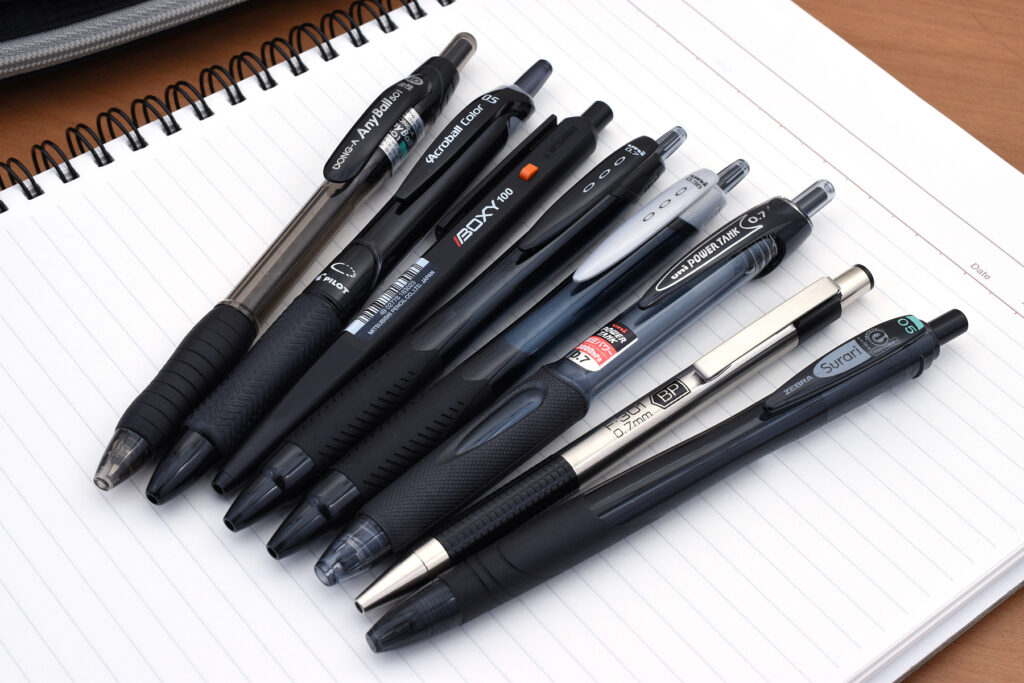Uncategorized
The Evolution of Ballpoint Pens
The Evolution of Ballpoint Pens: From Invention to Modern Innovation
Ballpoint pens, ubiquitous in offices, schools, and homes worldwide, have a fascinating history marked by innovation, refinement, and widespread adoption. From their humble beginnings as a practical writing tool to their transformation into sophisticated instruments of precision and design, ballpoint pens have evolved significantly over the years. This article delves into the journey of ballpoint pens from their invention to their current state of modern innovation, exploring key milestones, technological advancements, and their enduring appeal in today’s digital age.
Invention and Early Development
The story of the ballpoint pen begins in the late 19th century with several inventors attempting to create a reliable alternative to fountain pens, which were messy and prone to leaking. However, it wasn’t until the 20th century that significant progress was made towards developing a functional ballpoint pen.
- Patent and Early Designs:
- John Loud’s Patent (1888): John J. Loud, an American leather tanner, patented a “rolling-point fountain pen” designed to write on rough surfaces like leather. While his invention was not commercially successful, it laid the groundwork for future developments.
- László Bíró (1938): Hungarian journalist László Bíró, along with his brother György Bíró, developed the modern ballpoint pen concept. They invented a pen using a tiny ball in the tip that rotated freely and was continuously fed with ink from a cartridge. This design prevented ink from drying out and enabled smoother writing on various surfaces.
- Commercialization and Early Challenges:
- WWII Impact: During World War II, the ballpoint pen gained popularity among aviators and military personnel due to its reliability at high altitudes and in varied climates. Allied forces used ballpoint pens extensively, contributing to their initial commercial success after the war.
- Early Technical Issues: Early ballpoint pens faced challenges such as ink flow consistency, durability of the ball mechanism, and manufacturing precision. Innovations in materials and manufacturing processes were crucial in overcoming these obstacles.
Technological Advancements
Following their initial introduction, ballpoint pens underwent continuous refinement and technological advancements to improve performance, reliability, and user experience.
- Ink Formulations:
- Oil-Based Ink: Traditional ballpoint pens use oil-based ink, which dries quickly and prevents smudging. This type of ink is suitable for everyday writing tasks and provides a consistent flow without leaking or drying out.
- Gel Ink and Hybrid Pens: In recent decades, gel ink and hybrid ink pens have become popular alternatives to traditional ballpoint pens. Gel ink offers smoother writing and vibrant colors, while hybrid ink combines the best features of gel and ballpoint pens for enhanced performance.
- Design and Ergonomics:
- Comfort and Grip: Modern ballpoint pens feature ergonomic designs with comfortable grips that reduce hand fatigue during extended writing sessions. Design elements such as retractable tips, rubberized grips, and balanced weight distribution contribute to user comfort and usability.
- Refillable and Sustainable Options: Many manufacturers now offer refillable ballpoint pens, reducing plastic waste and environmental impact. Refill cartridges are available in various colors and ink types, providing versatility for different writing tasks.
- Specialty and Luxury Pens:
- Collector’s Items: Ballpoint pens have evolved beyond functional tools to become collector’s items and luxury goods. High-end pen manufacturers offer pens crafted from premium materials such as precious metals, rare woods, and gemstones, often featuring intricate designs and personalized engravings.
- Innovative Features: Luxury ballpoint pens may include features such as retractable mechanisms, integrated styluses for touchscreen devices, and advanced ink delivery systems for smoother writing experiences.
Contemporary Uses and Cultural Significance
In the digital age, where electronic devices dominate communication and information sharing, ballpoint pens continue to hold a significant place in everyday life and professional settings.
- Office and Business Applications:
- Document Signing: Ballpoint pens remain the preferred choice for signing contracts, legal documents, and official paperwork due to their permanence and reliability.
- Note-Taking: In meetings, lectures, and brainstorming sessions, many individuals still prefer using ballpoint pens for note-taking and jotting down ideas quickly and efficiently.
- Education and Learning:
- School Supplies: Ballpoint pens are essential school supplies for students of all ages, used for writing assignments, and exams, and taking notes in class.
- Learning Development: Writing with a pen has cognitive benefits, aiding in memory retention, fine motor skill development, and fostering creativity compared to typing on keyboards.
- Artistic Expression:
- Sketching and Drawing: Artists and designers often use ballpoint pens for sketching and creating detailed drawings due to their precise line control and archival-quality ink.
- Urban Sketching: The portability and versatility of ballpoint pens make them popular among urban sketchers for capturing scenes and landscapes in real time.
- Cultural Icon and Fashion Accessory:
- Pop Culture References: Ballpoint pens have appeared in literature, films, and popular culture as symbols of creativity, professionalism, and personal expression.
- Fashion and Style: Designer brands and fashion houses have collaborated with pen manufacturers to create limited-edition and custom-designed ballpoint pens as fashion accessories and luxury collectibles.

Sustainability and Future Trends
As sustainability becomes increasingly important, the ballpoint pen industry continues to innovate with eco-friendly materials, refillable designs, and reduced packaging.
- Environmental Considerations:
- Refillable Options: Refillable ballpoint pens reduce plastic waste by allowing users to replace ink cartridges instead of disposing of entire pens.
- Biodegradable Materials: Some manufacturers are exploring biodegradable plastics and eco-friendly ink formulations to minimize environmental impact.
- Digital Integration:
- Smart Pens: The integration of digital technology into ballpoint pens has led to the development of smart pens that digitize handwritten notes and sketches, syncing them with digital devices for easy storage and sharing.
- Touchscreen Compatibility: Pens with stylus tips are designed for touchscreen devices, offering dual functionality for writing on paper and interacting with digital screens.
- Artisanal Craftsmanship:
- Handcrafted Pens: Artisans and small-scale manufacturers continue to produce handmade ballpoint pens using traditional techniques and premium materials, appealing to collectors and enthusiasts who appreciate craftsmanship and exclusivity.
- Global Reach and Accessibility:
- Education Initiatives: Organizations and initiatives promote access to education by distributing ballpoint pens to underserved communities, emphasizing their role in literacy and learning worldwide.
Conclusion
The evolution of ballpoint pens from their inception to modern innovation illustrates their enduring relevance and adaptability in a changing world. From revolutionizing writing tools to becoming symbols of craftsmanship and cultural significance, ballpoint pens continue to play a pivotal role in communication, creativity, and everyday tasks. As technology advances and consumer preferences evolve, the ballpoint pen industry remains dynamic, embracing sustainability, digital integration, and artisanal craftsmanship to meet diverse user needs. Whether for practical writing purposes, artistic expression, or collector’s items, ballpoint pens are poised to continue shaping the way we write, create, and connect for generations to come.
Follow jasminering.net

